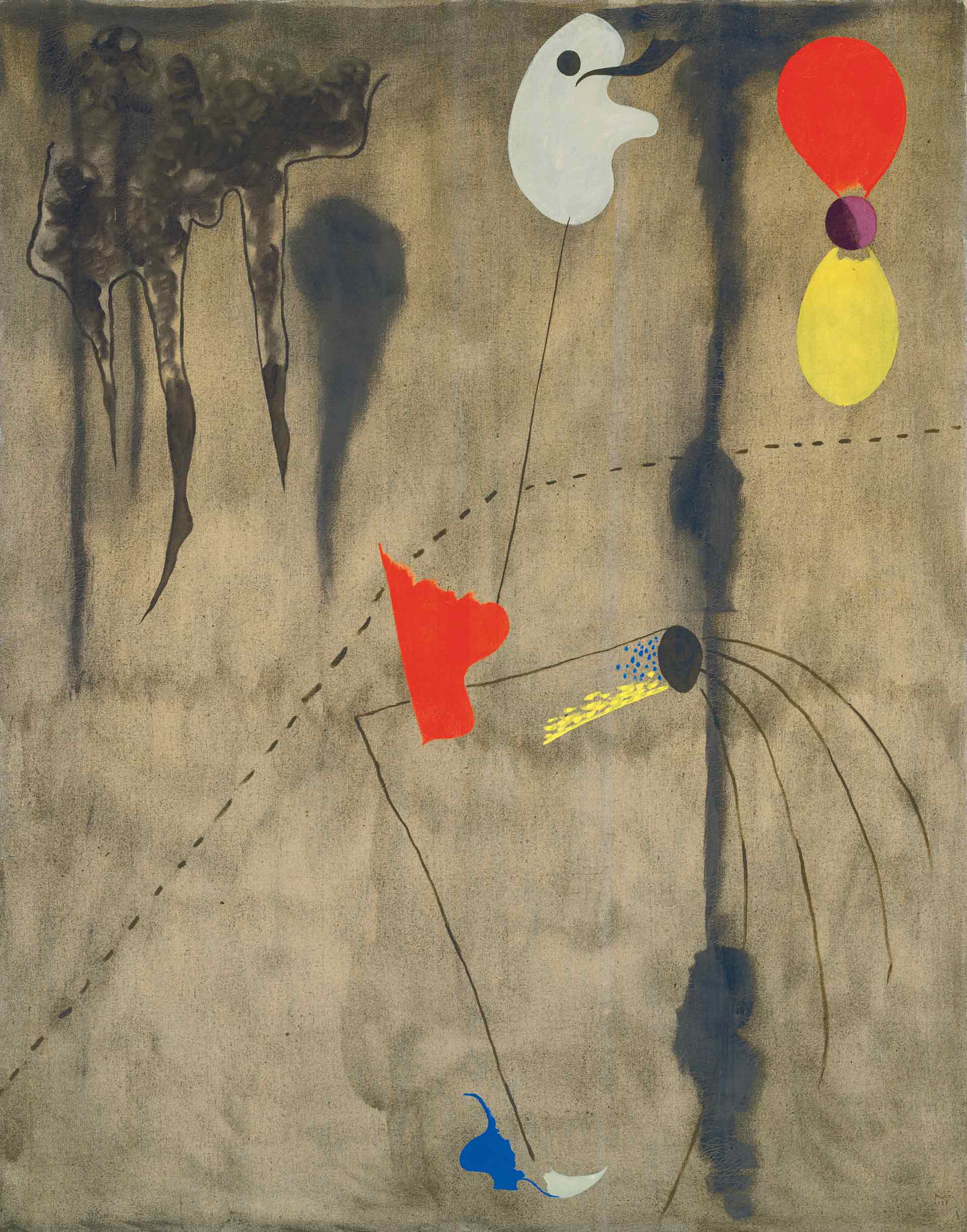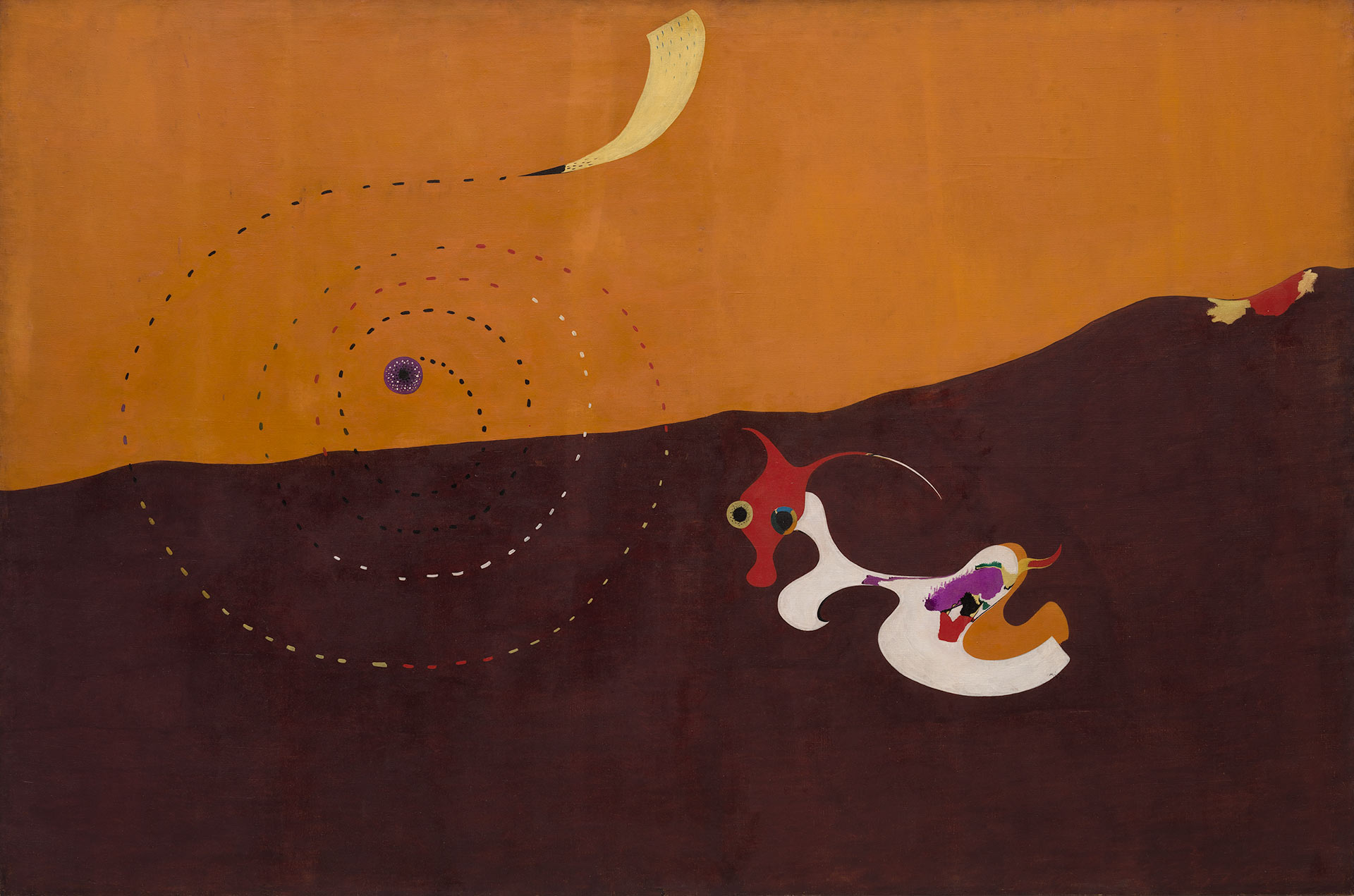Dream Paintings and Landscapes
When Miró set up his first Paris studio at 45 Rue Blomet, he became a neighbor of painter André Masson. During that period, he also had dealings with many poets, such as Antonin Artaud, Raymond Roussel, Robert Desnos, Michel Leiris, and René Char, who captivated him with their formal innovations, their rejection of logic, cliché, and tradition, their interest in questions like automatism, their aesthetic of fragmentation, their arbitrary union of unexpected and unconnected images, and the visual and typographic configuration of their poetic texts (as in the calligrams). Miró’s pictures of the mid-1920s, known as “dream paintings,” destroy any logical narrative structure. Although the few elements scattered across their surfaces seem to be the fruit of improvisation, his sketches prove that he carefully prepared the composition.
Between 1926 and1927, Miró changed his setting and style. He moved to the Rue Tourlaque, where he worked until 1929 and frequented the company of artists like Jean Arp, René Magritte, and Max Ernst, alternating his stay in Paris with summers in Catalonia. Among the works of that time is an outstanding series of large-format horizontal landscapes, such as Landscape (Landscape with Rooster) and Landscape (The Hare), both from 1927. Here, Miró once more paints certain recognizable though stylized elements against grounds of intense colors that suggest wide spaces, discarding traditional pictorial methods like shading, construction of volume, or perspective. In a series of small paintings on white grounds produced in 1927, like Painting (The Sun) and Painting (The Star), the background is pure pictorial space where recognizable stylized forms of stars and animals float like emblems of a new reality.



